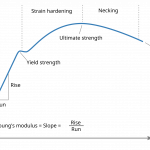
Key Takeaways
- After sintering, precise quality control is critical to detect defects such as pores, cracks, or inclusions before products reach customers.
- Non-destructive testing methods like resonance frequency measurement provide fast, accurate insights without damaging the material.
- Automated inspection systems can reduce human error and ensure consistent quality in high-volume production environments.
Why Quality Control After Sintering Matters
Sintering is a transformative process that turns powdered material into a solid, high-density product. While it enhances strength and durability, imperfections can still emerge during production. These defects—ranging from microscopic pores to internal cracks—can weaken materials, compromise performance, and lead to costly failures.
Without thorough quality control after sintering, manufacturers risk sending defective parts to market. This can result in warranty claims, reputational damage, and safety hazards in critical applications such as automotive components, medical devices, or industrial tools.
Common Post-Sintering Defects
Identifying what can go wrong is the first step to preventing quality issues. Some of the most typical post-sintering defects include:
- Pores: Tiny voids that reduce density and lower mechanical strength.
- Cracks: Internal or surface fractures that can lead to part failure under stress.
- Inclusions: Unwanted materials embedded during processing that weaken structure integrity.
Best Methods for Quality Control After Sintering
The key to post-sintering quality assurance is selecting the right inspection technique. The method should be accurate, efficient, and cost-effective, especially for large-scale operations.
1. Visual Inspection
A basic step for spotting obvious defects, visual examination uses the human eye or magnification tools. However, it cannot detect internal flaws and is best combined with advanced methods.
2. Dimensional Measurement
Using calipers, micrometers, and coordinate measuring machines (CMMs), manufacturers ensure parts meet exact size specifications. While effective for tolerance checks, it doesn’t reveal hidden structural defects.
3. Non-Destructive Testing (NDT)
Impulse Excitation Technique (IET) stands out as a leading NDT method for detecting internal defects without harming the part. By analyzing resonance frequencies and damping properties, IET reveals inconsistencies that may indicate cracks, porosity, or weak bonding. Learn more about how this works on our technology overview.
4. Automated Inspection Systems
In high-volume manufacturing, automation ensures uniform testing accuracy. Automated solutions not only speed up the inspection process but also eliminate subjective human interpretation, further reducing the risk of oversight. Discover advanced automated testing solutions here.
How IET Compares to Other Methods
| Method | Detects Internal Defects | Non-Destructive | Speed |
|---|---|---|---|
| Visual Inspection | No | Yes | Fast |
| Dimensional Measurement | No | Yes | Moderate |
| Impulse Excitation Technique | Yes | Yes | Fast |
| Destructive Testing | Yes | No | Slow |
Implementing Effective Post-Sintering Quality Programs
For best results, quality control should be integrated into the production line. Combining basic inspections with advanced testing methods like IET ensures a higher level of reliability and safety. Training teams to understand the benefits and results of these inspections also fosters a strong quality culture within an organization.
Industries That Benefit from Strong Post-Sintering QC
Post-sintering inspections are crucial in various fields, including:
- Automotive manufacturing – ensuring engine components withstand high-performance demands.
- Aerospace engineering – avoiding critical failures in high-stress flight environments.
- Medical implants – guaranteeing material integrity to protect patient safety.
- Precision industrial tools – maintaining accuracy and performance over long-term use.
Choosing the Right QC Partner
When it comes to high-stakes material evaluation, collaborating with an experienced partner can make a significant difference. From tailored inspection solutions to expert advice, working with a proven provider ensures that your products consistently meet or exceed industry standards.
FAQ
What is the most reliable quality control method after sintering?
Non-destructive testing methods, particularly the Impulse Excitation Technique, are among the most reliable because they detect internal defects quickly without damaging the product.
Why are defects after sintering so dangerous?
Post-sintering defects like cracks or pores reduce structural integrity, leading to part failure during use, which can cause operational downtime or safety risks.
Can quality control after sintering be automated?
Yes. Automated systems ensure consistent, objective measurements and are ideal for high-volume manufacturing where speed and accuracy are essential.
How does Impulse Excitation Technique work?
IET measures the natural resonance frequency of a sintered product. Variations in these frequencies, combined with damping data, reveal hidden defects or inconsistencies in material properties.
What industries require the strictest post-sintering QC?
Industries such as aerospace, automotive, medical, and heavy manufacturing often have the strictest requirements due to the high-performance and safety-critical nature of their components.
Strong quality control ensures your materials meet rigorous industry standards and perform flawlessly in the field. If you’re ready to take your post-sintering inspection to the next level, get in touch with our experts today to discuss your testing needs.



